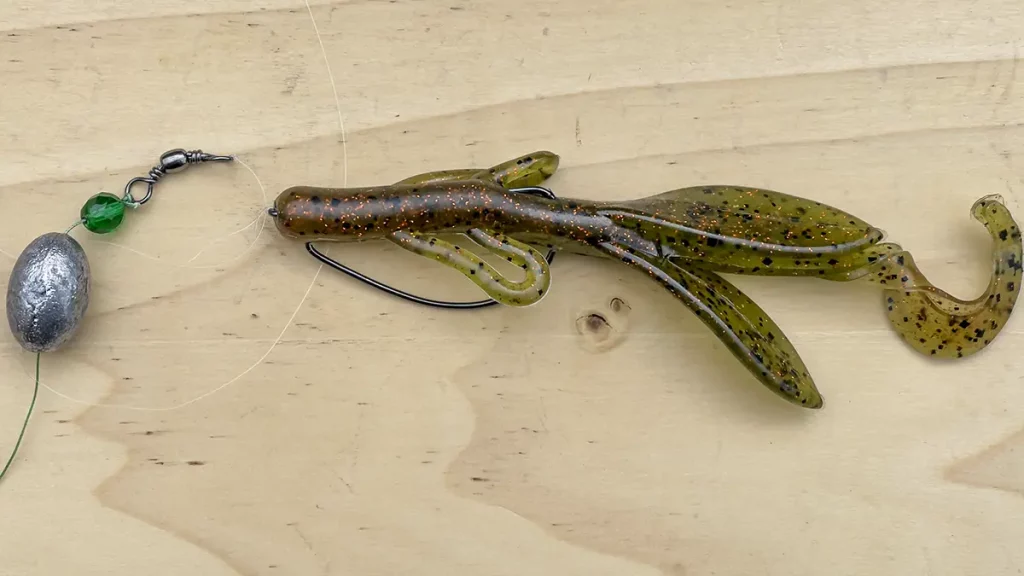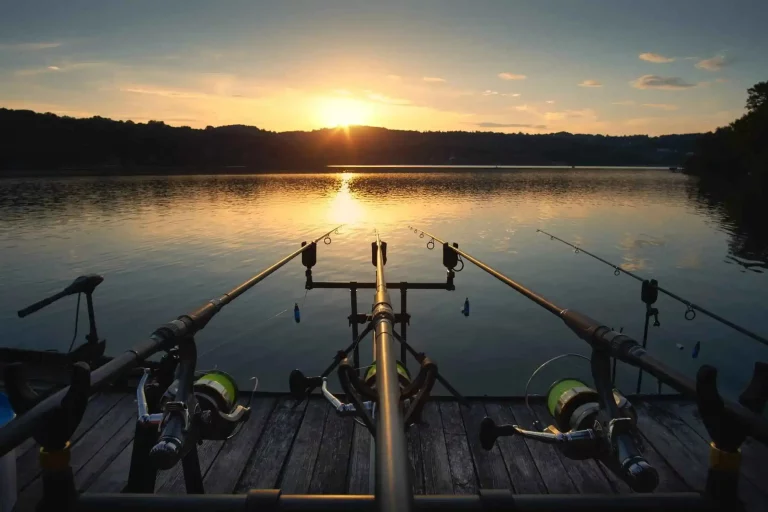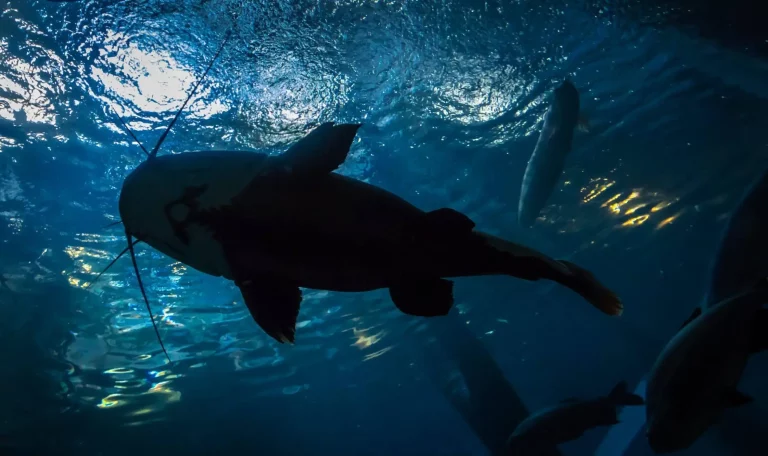Carolina Rig Setup

We’ve learned to use a variety of bait and fishing methods in our quest to capture more and bigger fish. When it comes to capturing a boatload of giant bass, the Carolina Rig is one of the most preferred fishing methods. In terms of the design, it’s straightforward.
To your mainline, attach a sinker in the form of an egg or bullet weight. Tie a swivel to the bead after that. Decide on a kind and length of leader.
Use at least a 3/0 worm hook for your hook at the end of your leader line. A wide-gap offset worm hook is my go-to fishing tool for worm fishing.
If you’re fishing for hungry or aggressive bass, you can use any soft plastic bait. Try crawfish, lizards, or worms if you’re looking for an unusual bait. Crankbaits and topwater lures may be used to push your soft plastic off the bottom and give action you won’t get with soft plastics alone.
Contents
When Should You Use the Carolina Rig?
Anytime you want to go fishing, that is.
If you mark a fish holding on to a point or hump, you will receive a bite on it. Even if you don’t have sonar, you can still work these regions from side to side. You can get a lot done quickly, whether it’s catching fish or moving on to another location.
When targeting bass, the Carolina Rig is a good place to begin. Bass fishing is a highly effective and straightforward method of setting up your line. Consider giving it a go and seeing how it performs for you.
In addition, you must know how to use it and then focus on the features of the Carolina rig.
What you will need:
A 7-foot medium-heavy, fast-action rod is required. Carolina Rig rods should have this standard to get the most out of this configuration. You may fish it with any rod and whatever setup you choose. Action, comfort, and even fish may be at risk if you continue on your current path.

It recommends using a bait cast reel with a 6:1 gear ratio, but you may also use a spinning setup if you like. When fishing the Carolina Rig with an 18″ to 30″ leader on a long rod, you’ll want to be able to pull in line fast, and the 6:1 gear ratio makes that possible.
0.5 to 1-ounce sinkers in the egg or bullet shape. The egg sinker can become tangled in the grass and other vegetation when fishing with a bullet-style hook.
Beads of plastic. Although glass is an option for some, plastic is my preferred material. Protecting the knot from the strain of the sinker sliding along a line is the bead’s primary function. It also has a built-in noisemaker to draw in hungry bass.
To suit the size of the tackle you’re using, choose a swivel.
The worm hooks are 3/0 to 5/0. The offset style is the one I favour. You may use the same line on your reel as a leader. However, I recommend using Fluorocarbon with a monofilament leader.
How do you fish it?
After casting, you pull the Carolina Rig over the area you want to fish. You can drag the aim of your pole on the water’s surface and use horizontal action to rotate the lure. Avoid jerking the rig. A gentle sweep will be enough.
So, how much do you drag the lure?
A decent rule of thumb is to shift your rod to the 2 o’clock position while your rod is pointing towards midnight. After that, please pick up the slack and do it again. If you’re using a 7-foot sweep, shift it to the 3 or 4 positions to get the same amount of line movement. Using a 7′ or longer rod is one of the reasons.
Walking on grass, sand, or gravel on the lake’s bottom will give you a sense of how different the lake’s bottom is. Observe who made each part of the construction. Consider what your rod is telling you about the bottom during this transition.
What are some places you’ve seen the Carolina Rig in action?
This setup will work well for you wherever you think there’s bass to catch. The rigs might get snagged by trees or other strong, tough vegetation in areas with many of them. It would help if you avoided only regions with many thick covers.
Aside from that, the lake is yours to explore with the Carolina Rig. When dragging, be sure to go in all directions. Make use of the humps and underwater grasses.
When you notice a shift, things can get in the way; be particularly vigilant. Whenever you sense this, it’s time to put your equipment on hold and let it rest for a while. The bass will be able to keep its position at a unique location. You might be sitting on a goldmine. Repeat your efforts in this area, and they should bear fruit.
Why the Carolina Rig Appeals to Fish:
Aggression and opportunity are the primary drivers of fish-feeding behaviour (Hungry). While managing a spawning bed, fish will attack practically any prospective meal when in an aggressive feeding state. They’ll either swallow or spittle it out once they’ve crossed the border if it’s a complete meal. Feeding opportunities are becoming more numerous, and it is a reflex as much as it is a conscious decision. If you’re fishing, you’re less likely to chase a prospective meal or use too much energy in your quest. Fish are merely taking advantage of the opportunity to eat by spotting a potential food supply.
In any mode, the Carolina rig is an excellent choice. It’s possible to catch a fish that isn’t afraid of the circular motion. If you’re targeting opportunistic feeders, you may drop the bait as close to them as possible so they can take advantage without having to go far.
Conclusion:
We hope that the tiny amount of information we’ve supplied will help you decide when and how to utilize the Carolina rig most successfully. The aim is to catch more fish, and there comes a period when nothing tops the Carolina rig in doing this.
You may demonstrate the Carolina rig for the bass in this video. In this video, we teach you how to give it, and then we show that it generates fish directly off the bank.




